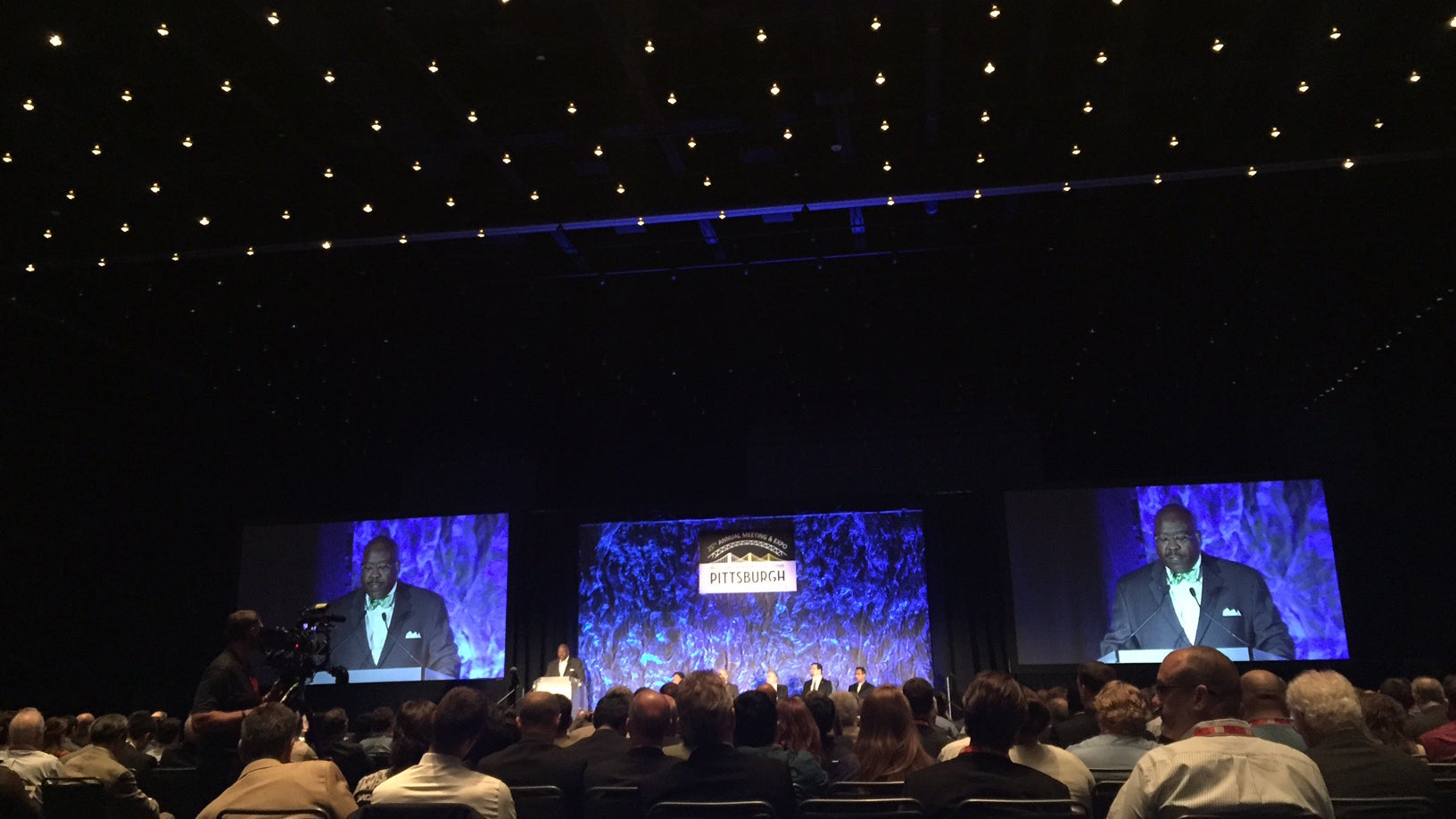At the Intelligent Transportation Society meeting, the future of transportation looks bright

A full room of transportation professionals listen to a panel of speakers from the Department of Transportation and Department of Energy. (Irina Zhorov/WESA)
Big data, more connectivity, and new high-tech tools are the future of transportation.
Americans waste what amounts to 162 lifetimes per day sitting in traffic, and Google’s self-driving car could ameliorate that while improving safety, said Google’s Chris Urmson at the Intelligent Transportation Society (ITS) meeting . Much of the conference revolved around cars – especially autonomous vehicles and connected autos – and driving infrastructure. There are tools to monitor bridges for safety and functionality, robots to inspect them, smart traffic signals that can sense traffic and adapt accordingly for a more efficient commute.
The conference painted the future of transportation as big data, more connectivity, and new high-tech tools.
ITS works to improve transportation through research and development of technology, and the meeting, held in Pittsburgh this week, brought together transportation system officials, government administrators, and university and private sector researchers from around the world to talk shop and coo over case studies.
Many of the new, high-tech tools being developed will help build – and maintain – smart cities with existing infrastructure and systems. Kurtis McBride, with MioVision, which focuses on automating traffic count surveys, said there needs to be a shift in thinking from putting value on hardware – like roads and traffic signals – to putting value on software – like how the traffic signals are programmed, for example. He compared it to the evolution of the phone; while phone hardware has changed significantly over the years, it’s the apps and other software that have really transformed how we use and think about our phones, he said.
Big data can help disrupt (and improve) how people perceive and manage complex city processes, like the operation of public transit. Ion Ho, a research engineer with PARC, Inc., worked with data collected by Rochester’s transit service to improve on-time performance throughout the system. She said there was a lot of automatically collected data -– so much that she said it was difficult to even figure out what to do with it –- but it was in an unusable format. She worked to visualize the data so that, for example, managers could see if a specific bus is always late and address the problems on a case-by-case basis. Around the U.S., transportation agencies are collecting data by crowdsourcing experimenting with novel techniques, like using video and automatically translating it into data, using connected vehicles, and social media.
Attendees were not blind to the fact that many cities cannot afford big new investments. Federal money for infrastructure projects is expected to run out in July if there’s no Congressional action to renew it. Legacy cities, especially, have aging infrastructure and tight budgets. Too, while many presenters emphasized increased efficiencies as well as financial benefits stemming from their initiatives, equity, especially in public transport, was also a concern. Therese McMillan, acting administrator of the U.S. Department of Transportations’ Federal Transit Administration, told a full auditorium “the promise of new technology and new modes of travel cannot be limited to the privileged. We have the responsibility to ensure that advances in this field benefit those who rely most heavily on public transit.”
WHYY is your source for fact-based, in-depth journalism and information. As a nonprofit organization, we rely on financial support from readers like you. Please give today.


